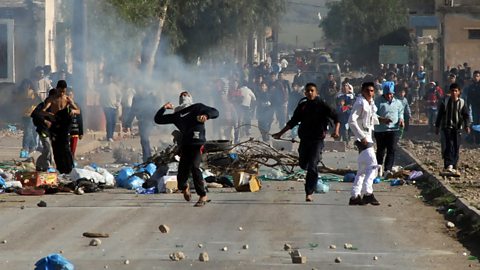Factors affecting food security
Global food supply is not even. Some places produce more food than others.
Physical factors (such as climate, soil quality and gradient) and human factors (such as technology) have historically controlled the quantity and type of food produced in any location. Today, there are many other factors that explain why some countries produce more food than others:
- Climate - global warming is increasing temperatures by around 0.2┬░C every 10 years. Rainfall is increasing in some places, but decreasing in others. Higher temperatures and unreliable rainfall make farming difficult, especially for those farming marginal landLand that is difficult to develop and yields little profit., who already struggle to survive. Even advanced country (AC)A country that has well-developed financial markets, rapidly growing service sectors and diverse economic structures. can be affected by drought. Countries such as Russia and Australia are huge exporters of wheat and barley respectively. When they suffer drought there is less food available globally and global food prices increase, leaving the poor most vulnerable.
- Technology - improvements in technology have increased the amount of food available. Technology can overcome temperature, water and nutrient deficiencies in the form of greenhouses, irrigation and fertilisers. This can incur an economic or environmental cost. ACs import food from across the globe, all year round.
- Loss of farmland - the growth of the biofuelA type of energy source derived from renewable plant and animal materials, eg ethanol (often made from corn in the United States and sugarcane in Brazil), biodiesel (vegetable oils and liquid animal fats) and biogas (methane from animal manure). market is taking up valuable farmland which is then not used for food.
- Pests and diseases - pesticideA chemical used to kill pests, such as the potato cyst nematode which is a pest that destroys potato crops. have increased crop yields. Farmers in ACs can afford pesticides, whereas most farmers in low income developing country (LIDC)Any country that is among the poorest in the world, based on per capita income. cannot afford them.
- Water stress - irrigationThe channelling of water from rivers and streams to fields in order to help crops grow. systems provide water for countries with unreliable or low rainfall. Irrigation can double crop yieldThe mass of a crop produced., but it is expensive to put these systems in place. Water can be taken either from underground aquiferNaturally occurring underground water stores. or directly from rivers. Both have environmental consequences.
- Conflict - war forces farmers to flee their land or to fight in conflict. Food can be used as a weapon, with enemies cutting off food supplies in order to gain ground. Crops can also be destroyed during fighting. Food shortages have caused riots and conflict. The South Sudan region has faced conflict for years, with 4 million people facing food insecurityWhen people do not have enough nutritious and affordable food to eat.. In the Darfur area conflict has lasted years because of disagreement over land and grazingThis is when animals feed on grass. rights.
- Poverty - when people have less money, they cannot afford food and they become unable to work. Families in developing countries spend much of their income on food.
Impact of food insecurity
Food security is when the entire population of a country has access to enough safe and nutritious food to maintain an active life. The opposite is food insecurityWhen people do not have enough nutritious and affordable food to eat., which is a problem for lots of different countries. Countries that do not have enough food to feed everyone usually have other associated issues to overcome. Some impacts of food insecurity include:
- Hunger ÔÇô caused by a lack of food. This can lead to undernutritionNot having enough food to be able to grow and stay healthy., and in more extreme cases, famineAn extreme lack of food that leads to large numbers of people starving to death.. According to the United Nations, around 828 million people across the world are affected by hunger.
- soil erosionWhen earth is washed or blown away. - the removal of soil occurs more rapidly in areas that are very dry. Food insecurity can lead to soil erosion as farmers try to get more out of their land.
- deforestationThe cutting down of trees and forests to allow a different land use., overgrazingWhen land cannot sustain the number of animals that are feeding from it. and over-cultivationWhen land cannot sustain the amount of crops grown. expose the soil and make it vulnerable to wind and water erosion.
- Rising prices - when there is less food available, the prices of food increase - since the year 2000 prices have risen. Poorer countries are more vulnerable to increasing food prices.
- Debt - food prices can be set by speculators in ACs. This can cause great swings in the prices offered to farmers for their crops from year to year. Farmers may incur debts by borrowing to buy seeds and equipment and then find they cannot sell their crops at a high enough price to repay the loan.
- Social unrest - everyone needs to eat and so when food supplies are low people have to fight for their survival. Riots in Algeria in 2011 were caused by high food costs. The prices of cooking oil, sugar and flour doubled within the space of a few months.
